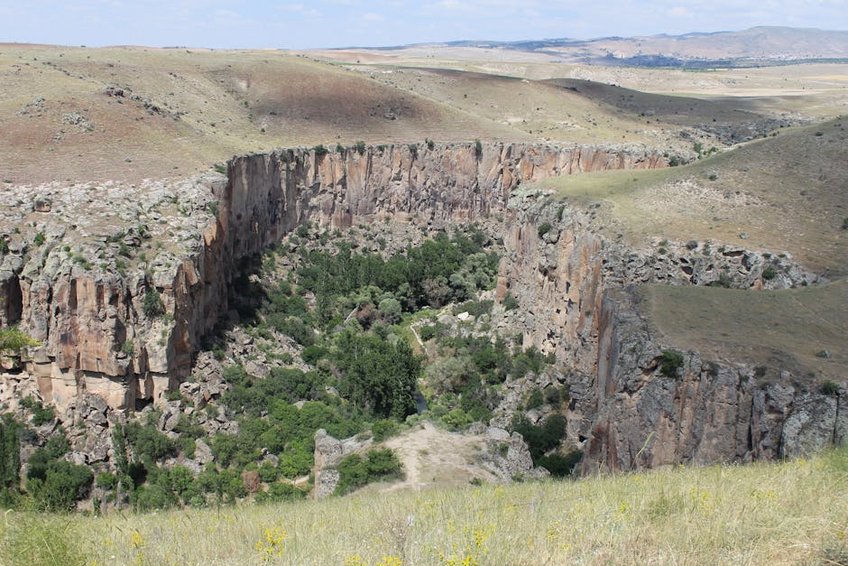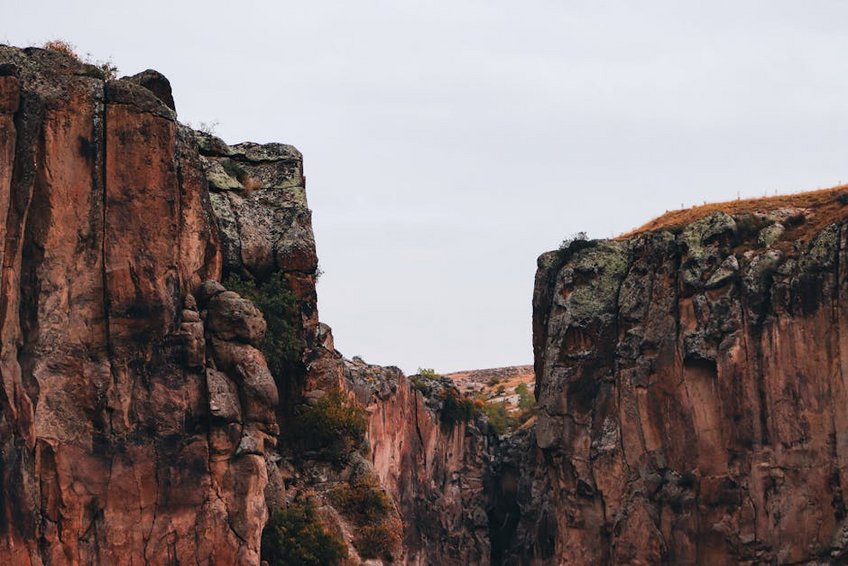Ihlara Valley: Your Ultimate Guide to Turkey’s Hidden Canyon Paradise
Imagine walking through a breathtaking canyon carved by the Melendiz River over thousands of years, surrounded by towering rock walls adorned with ancient churches and lush vegetation. Ihlara Valley offers exactly that—a spectacular blend of natural beauty, historical significance, and outdoor adventure that few destinations can match. Located in Cappadocia, Turkey, this 14-kilometer-long canyon reaches depths of up to 150 meters and features numerous Byzantine-era rock-cut churches with stunning frescoes. Whether you’re a history enthusiast, nature lover, or avid hiker, Ihlara Valley promises an unforgettable experience that combines physical activity with cultural immersion. The valley’s unique microclimate supports diverse plant life, creating a green oasis in the heart of Anatolia’s semi-arid landscape. You’ll find yourself constantly amazed by how this hidden gem manages to offer so much variety in one relatively compact area, making it perfect for day trips or longer explorations from nearby Cappadocian towns.
Ihlara Valley Essential Information – What Every Traveler Should Know
Before embarking on your Ihlara Valley adventure, understanding some fundamental details will significantly enhance your experience. The valley forms part of the larger Cappadocia region, approximately 40 kilometers southwest of the popular tourist town of Göreme. This geological wonder was created by volcanic eruptions from Mount Erciyes millions of years ago, followed by erosion from the Melendiz River that carved out the spectacular canyon you see today. What makes Ihlara Valley particularly fascinating is how it served as an important religious retreat during the Byzantine era, with monks carving churches directly into the soft volcanic rock. The combination of natural formation and human history creates a destination that appeals to multiple interests simultaneously. You’ll want to allocate at least half a day to properly explore the main sections, though serious hikers might want to tackle the entire length.
Historical Significance – More Than Just Scenery
- The valley contains approximately 100 rock-cut churches dating from the 4th to 13th centuries, with about 15 accessible to visitors featuring well-preserved frescoes depicting biblical scenes
- Early Christians used the valley as a hiding place and spiritual retreat during periods of persecution, creating a unique underground civilization
- The Agacalti Church (Church Under the Tree) and Yilanli Church (Snake Church) contain some of the most impressive and well-preserved frescoes in the entire region
- Budget travelers can expect to spend approximately $35-50 per person including transportation from Göreme, entrance fee ($5), and self-guided hiking with packed lunch
- Mid-range visitors typically spend $75-120 for guided tours including transportation, entrance fees, lunch at a riverside restaurant, and professional guide services
- Luxury experiences range $150-250+ featuring private guides, specialized photography tours, gourmet meals, and combination packages with other Cappadocia attractions
- Official Cappadocia Tourism Information on Ihlara Valley
- UNESCO World Heritage Site Listing for Göreme National Park and Rock Sites of Cappadocia
- Lonely Planet Guide to Ihlara Valley and Cappadocia Region
Geological Formation – Nature’s Masterpiece
The valley’s creation began approximately 14 million years ago when volcanic eruptions from Mount Erciyes, Mount Hasan, and other regional volcanoes deposited thick layers of ash and lava across the area. Over millennia, this volcanic material compressed into soft rock called tuff, which erosion from the Melendiz River then carved into the dramatic canyon visible today. The varying resistance of different rock layers created the distinctive cliff formations, caves, and rock pillars that make the landscape so visually striking. This geological history explains why the rock was soft enough for early inhabitants to carve churches and dwellings yet durable enough to preserve them for centuries. The river continues to shape the valley today, though at a much slower pace than during previous geological epochs.

Ihlara Valley Planning Your Trip – Seasons, Budget, and Preparation
Proper planning transforms a good Ihlara Valley visit into an exceptional one. The valley’s experience varies dramatically by season, with spring bringing wildflowers and rushing water while autumn offers comfortable temperatures and golden landscapes. You’ll need to consider transportation options since public transport to the valley is limited, making organized tours or rental cars the most practical choices for most visitors. Budget considerations should account for entrance fees, transportation, meals, and optional guided services. Physical preparation is equally important—while the main paths are well-maintained, the valley involves significant walking on uneven surfaces with elevation changes. Those with mobility issues might find certain sections challenging, though the most accessible parts still offer rewarding experiences. Advance planning ensures you maximize your time enjoying this natural wonder rather than dealing with logistical challenges on-site.
Best Time to Visit Ihlara Valley
Spring (April to June) represents the ideal season for visiting Ihlara Valley, when temperatures range from 15-25°C (59-77°F) and the valley erupts with wildflowers and greenery. The Melendiz River flows at its strongest during this period, creating more dramatic waterfalls and adding to the valley’s auditory atmosphere. Autumn (September to October) offers similar advantages with slightly fewer crowds and beautiful fall colors, though water levels are lower. Summer months (July-August) can be extremely hot, with temperatures often exceeding 30°C (86°F), making hiking uncomfortable during midday hours. Winter visits have their own charm with snow-dusted landscapes and minimal crowds, though some paths may be slippery and certain facilities have reduced hours. Regardless of season, early morning visits provide the best light for photography and more peaceful experiences before tour groups arrive.
Budget Planning and Costs for Ihlara Valley
Essential Preparation Checklist
Preparing adequately for your Ihlara Valley excursion ensures comfort and safety throughout your adventure. Start with proper footwear—sturdy hiking shoes with good grip are essential since paths can be uneven and occasionally slippery near the river. Dress in layers as temperatures can vary significantly between the canyon floor and viewpoints above, and bring sun protection even on cloudy days. Pack sufficient water (at least 1.5 liters per person) and energy snacks, though you’ll find basic supplies at entrance points and a couple of restaurants within the valley. Don’t forget your camera with extra batteries, as you’ll encounter countless photo opportunities. If visiting independently, download offline maps or bring printed materials since cellular service can be unreliable within the deep canyon. Finally, carry some Turkish Lira for entrance fees and small purchases, though credit cards are accepted at main ticket offices.
Ihlara Valley Top Attractions and Activities – Exploring the Canyon’s Wonders
The Ihlara Valley experience extends far beyond simple hiking, offering diverse attractions that cater to different interests and energy levels. The main activity involves walking along the river through the canyon, with multiple entry/exit points allowing you to customize your route based on time and fitness level. History enthusiasts will want to allocate significant time to explore the Byzantine churches, each with unique architectural features and fresco preservation. Nature lovers can enjoy birdwatching—the valley hosts numerous species including eagles, hawks, and various water birds—and botanical observation of the diverse plant life thriving in the microclimate. Photography opportunities abound throughout, from wide canyon vistas to intimate details of ancient artwork. Several rest areas along the river provide perfect spots for picnics or simply soaking in the peaceful atmosphere away from the more crowded parts of Cappadocia.
Must-See Highlights in Ihlara Valley
Begin your exploration at the main entrance near Ihlara village, where a staircase of nearly 400 steps descends into the canyon—daunting but rewarding with spectacular views during the descent. The Agacalti Church (Church Under the Tree) stands as one of the most impressive religious sites, featuring well-preserved frescoes including a striking depiction of the Ascension. Further along the path, the Yilanli Church (Snake Church) offers fascinating artwork that includes scenes of saints killing snakes, representing the triumph of Christianity over evil. The river itself serves as a constant companion throughout your hike, with several picturesque bridges crossing between trails on either bank. Don’t miss the Belisırma village area approximately halfway through the valley, where several restaurants offer traditional Turkish meals right beside the flowing water—an experience that combines nourishment with incredible ambiance.
Hidden Gems and Local Favorites
While most visitors focus on the main path between Ihlara and Belisırma, several detours lead to less-visited churches and natural features worth exploring. The Kokar Church (Fragrant Church) gets its name from the distinctive smell within, possibly from centuries-old incense residues, and features unique architectural elements. For a truly local experience, visit during weekdays rather than weekends when Turkish families often picnic along the riverbanks—you might even be invited to share çay (tea) with friendly locals. The section between Belisırma and Selime receives fewer visitors but contains equally impressive scenery and several interesting rock formations. Early mornings before 10 AM offer the most magical light conditions and greatest sense of solitude, particularly if you start from the Selime end and walk against the typical tourist flow. During spring, look for wild asparagus growing along the paths—local restaurants often feature this seasonal delicacy on their menus.
Ihlara Valley Practical Travel Information – Transportation, Accommodation, and Services
Navigating the practical aspects of visiting Ihlara Valley requires understanding the region’s transportation options and available services. The valley has three main access points: Ihlara village at the northern end, Belisırma village in the middle, and Selime village at the southern end. Most visitors arrive via organized tours from Göreme or other Cappadocian towns, which provide transportation, guides, and sometimes meals. Independent travelers can reach the valley by dolmuş (shared minibus) from Aksaray, though services are infrequent and may require transfers. Once at the valley, you’ll find basic facilities including ticket offices, restrooms, and small cafes at the main entrances, with more substantial restaurants in Belisırma village. Accommodation options within the valley itself are limited, making nearby towns more practical bases for exploration. Cellular service varies throughout the canyon—strongest at higher elevations and spotty along the river path.
| Transportation Method | Details and Considerations | Approximate Cost (USD) |
|---|---|---|
| Organized Tours | Includes round-trip transportation from Cappadocia hotels, guide, entrance fees, and often lunch | $40-75 per person |
| Rental Car | Maximum flexibility, parking available at main entrances, 1-hour drive from Göreme | $35-60 per day plus fuel |
| Taxi | Convenient but expensive, can negotiate waiting time or return pickup | $80-120 round trip from Göreme |
| Public Dolmuş | Economical but time-consuming, requires transfers in Aksaray, limited schedule | $5-8 per person each way |


